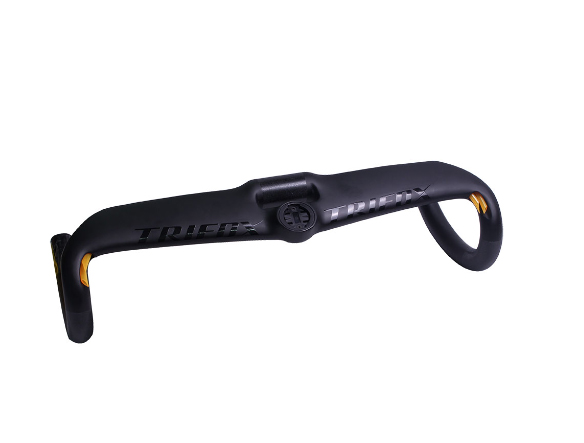
Selecting and installing the perfect bicycle drop bar can transform your riding experience, enhancing comfort, aerodynamics, and control. Here’s how to make the best choice: Material: Opt for lightweight and durable materials like carbon fiber. The Trifox Aerofoil Section Carbon Drop Handlebar TC20AF is an excellent example, offering both strength and minimal weight. Shape and Reach: Drop bars vary in shape (traditional, compact, ergo) and reach (distance from the bar to the brakes). Compact bars are great for smaller hands and provide easier access to controls. Ergo shapes offer enhanced comfort by fitting the natural curve of your hands. Width: Match the width of the drop bar to your shoulder width for optimal control. Wider bars improve stability, while narrower bars reduce wind resistance, benefiting aerodynamic performance. Drop: The drop (vertical distance between the top and bottom of the handlebars) affects your riding posture. A deeper drop suits more aggressive, aerodynamic positions, while a shallower drop is better for relaxed rides. Installation: Installing drop bars can be straightforward. First, remove the old handlebars and clean the stem. Position the new bars and ensure alignment with the front wheel. Tighten the clamp bolts evenly. Attach the brake levers and shifters, ensuring comfortable reach. Finally, wrap the bars with handlebar tape for a secure grip. Test Ride: After installation, take a test ride to adjust the positioning as needed. Ensure that the brake levers and shifters are within easy reach and that the overall setup feels comfortable. By carefully selecting and properly installing the right drop bar, like the Trifox Aerofoil Section Carbon Drop Handlebar TC20AF, you can significantly enhance your cycling performance and comfort.
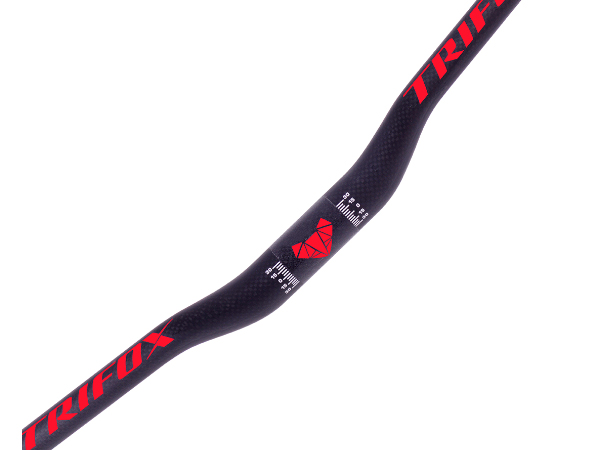
Choosing the best lightweight MTB handlebar for your mountain bike can significantly enhance your comfort, control, and overall riding experience. Here are some key considerations to guide you: Material: The material of your handlebar plays a vital role in its performance. Carbon fiber handlebars, like the Trifox Carbon Riser Handlebar RHB300, are a top choice due to their superior strength-to-weight ratio. They also excel in absorbing trail vibrations, providing a smoother and more comfortable ride compared to aluminum counterparts. Width: The width of the handlebar affects control and stability. Wider bars offer better leverage, making them ideal for rough terrains and technical trails. To determine the optimal width, consider your shoulder width and riding style. Cross-country riders might opt for narrower bars for agility, while enduro or downhill riders benefit from wider bars for enhanced control. Rise and Sweep: The rise refers to the height difference from the center to the ends of the bar. Higher rise handlebars provide an upright riding position, which is beneficial for downhill and technical riding. Lower rise handlebars are preferred for cross-country biking. The sweep, or backward angle of the handlebar, impacts wrist comfort. More sweep can reduce wrist strain during long rides. Clamp Diameter: Ensure that the handlebar's clamp diameter matches your stem size. Common sizes are 31.8mm and 35mm, with larger diameters offering increased stiffness and strength. Weight: Since you're focusing on lightweight options, prioritize handlebars that minimize weight without compromising strength and durability. Carbon fiber is often the best material for achieving this balance. Brand and Reviews: Lastly, consider reputable brands and read user reviews. A product like the Trifox Carbon Riser Handlebar RHB300 comes highly recommended for its quality and performance. By considering these factors, you can find the perfect lightweight MTB handlebar that enhances your riding style and improves performance. For a reliable option, check out the Trifox Carbon Riser Handlebar RHB300.
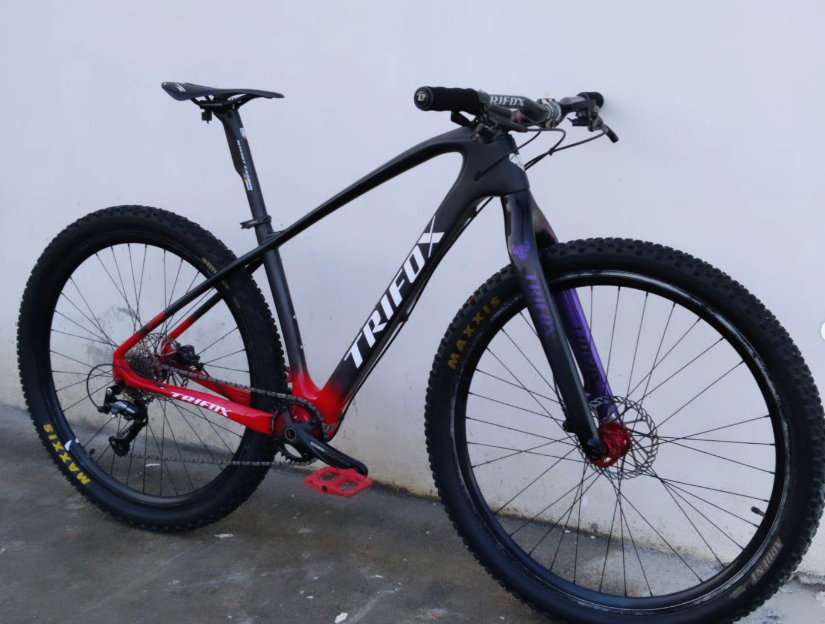
Boost rigid carbon forks offer a blend of strength, lightweight performance, and precise handling, making them ideal for demanding trail rides. Here’s how to maximize the benefits of your boost rigid carbon fork, like the Trifox TMK100. 1. Proper Installation Start with the correct installation. Ensure the fork is compatible with your frame and wheel setup. The Trifox TMK100, designed for 29er wheels and disc brakes, features a tapered steerer tube for improved stiffness and control. Carefully follow the manufacturer’s instructions to secure it properly and achieve optimal alignment. 2. Wheel Compatibility Ensure your wheels are boost compatible (110mm front hub spacing). This wider stance enhances stability and provides better handling on technical trails. Pairing your fork with the right wheels is crucial for maximizing performance. 3. Tire Selection Match your fork with suitable tires. Wider tires (up to 2.5 inches) offer better traction and comfort, complementing the fork's rigid nature. Adjust tire pressure to find a balance between grip and rolling resistance based on trail conditions. 4. Regular Cleaning Keep your fork clean. Mud and debris can accumulate, affecting performance over time. After rides, gently rinse off dirt and dry thoroughly. Avoid high-pressure water, which can damage the fork’s finish. 5. Periodic Inspection Regularly inspect your fork for any signs of wear or damage. Check for cracks, especially around the steerer tube and axle mount areas. Early detection of issues allows for prompt repairs, preventing further damage. 6. Maintenance Though rigid forks require less maintenance than suspension forks, occasional lubrication of the headset and cleaning of the fork legs ensures smooth operation. Follow the manufacturer’s guidelines for any specific maintenance procedures. 7. Ride Adjustment Adjust your riding style to leverage the fork's rigidity. Approach technical sections with confidence, knowing that your rigid fork offers precise handling and direct feedback from the trail. By following these tips, you can get the most out of your boost rigid carbon fork like the Trifox TMK100, ensuring a reliable and exhilarating ride on any terrain.
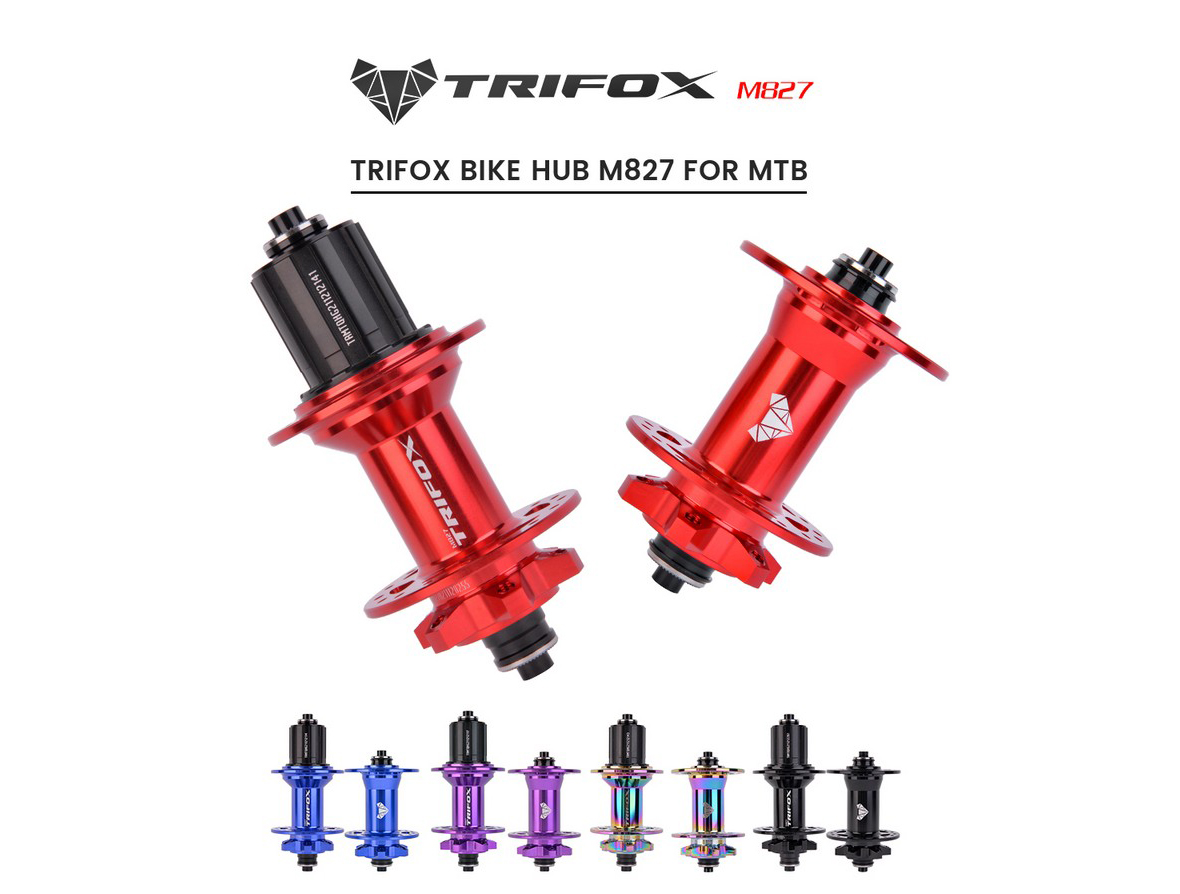
Installing and maintaining a 32H MTB hub is essential for ensuring smooth rides and extending your bike's lifespan. Here’s a step-by-step guide to help you get it right. 1. Installation First, choose a high-quality hub like the Trifox M827 MTB Hub for reliability and performance. Begin by threading the axle through the hub shell, followed by securing the bearings in place. Attach the hub to your wheel rim using a spoke wrench, tightening each spoke evenly in a cross-three pattern to maintain wheel integrity. 2. Lubrication Proper lubrication is crucial for smooth operation. Apply a thin layer of grease to the bearings and axle before installation. This reduces friction and prevents premature wear. 3. Alignment and Tensioning Ensure the hub is centered and spokes are uniformly tensioned. Uneven tension can lead to wheel wobble and compromised performance. Use a truing stand to check for accuracy and make necessary adjustments. 4. Maintenance Regular maintenance keeps your 32H MTB hub running smoothly. Clean the hub and surrounding components after every ride, especially in muddy or wet conditions. Periodically disassemble the hub to inspect and lubricate the bearings, replacing them if they show signs of wear. 5. Inspection Check the hub for damage or loose parts regularly. Pay attention to any grinding noises or resistance while spinning the wheel, as these can indicate issues within the hub. By following these steps, you can install and maintain a 32H MTB hub like the Trifox M827 effectively, ensuring a reliable and smooth ride on any terrain.
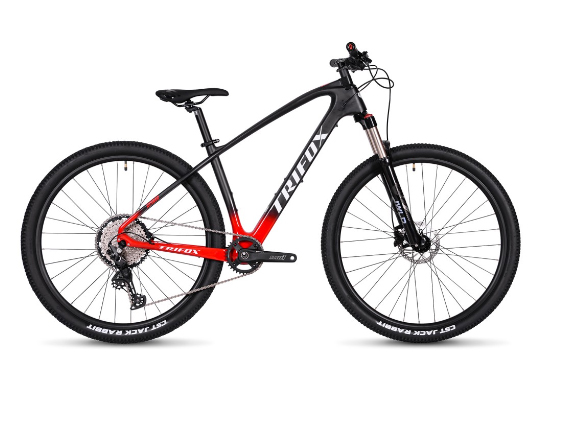
Selecting and maintaining a durable mountain bike (MTB) frame is essential for conquering rugged trails and ensuring your ride's longevity. Here's how to make the best choice and keep your frame in top shape. 1. Choose the Right Material The material of your MTB frame plays a critical role in its durability. Carbon fiber frames, like the Trifox MFM200, are renowned for their strength and lightweight properties. This advanced carbon material provides excellent shock absorption and resilience against the rigors of off-road riding. 2. Look for Reinforced Areas Durable MTB frames often feature reinforced areas, such as the bottom bracket and head tube, which endure high stress during rides. The Trifox MFM200 is designed with these reinforcements, ensuring it can withstand intense impacts and rough terrain. 3. Ensure Proper Fit A well-fitting frame enhances control and reduces fatigue, contributing to the overall durability of your ride. Make sure to choose a frame size that matches your height and riding style for optimal performance. 4. Regular Cleaning Clean your frame regularly to remove dirt, mud, and debris that can cause wear and corrosion. Use gentle cleaning solutions and avoid high-pressure water, which can damage the frame's finish and internal components. 5. Inspect for Damage Frequently inspect your frame for cracks, dents, or other signs of damage. Pay special attention to joints and welds. Early detection of issues allows for timely repairs, preventing minor problems from escalating. 6. Apply Protective Coatings Consider applying a protective coating to your frame to shield it from scratches and UV damage. This adds an extra layer of defense against the elements, prolonging the frame’s life. 7. Proper Storage Store your bike in a dry, cool place to prevent exposure to moisture and extreme temperatures. Invest in a bike stand or wall mount to keep it off the ground and reduce the risk of accidental damage. By carefully selecting a durable MTB frame like the Trifox MFM200 and following these maintenance tips, you can ensure a reliable and long-lasting ride, ready to tackle any trail.
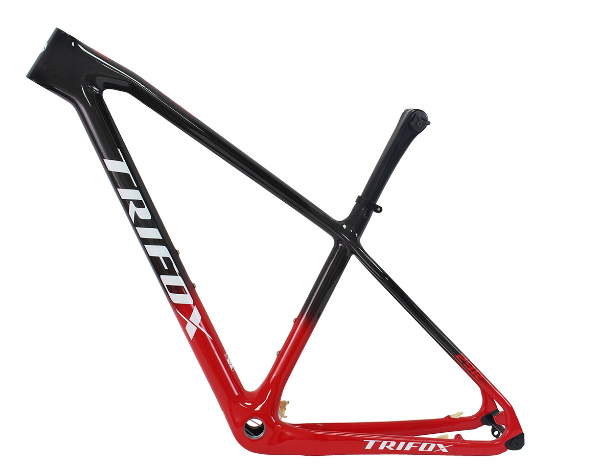
Setting up a full internal cable routing frame can drastically enhance the aesthetics and performance of your bike. By hiding the cables within the frame, you achieve a cleaner look while also reducing drag and preventing cable damage. Here’s a step-by-step guide to setting up a full internal cable routing frame for that sleek, professional appearance. 1. Choose the Right Frame The first step is selecting a frame designed for internal cable routing. The Trifox SDY21 Carbon MTB Hardtail Frame is an excellent choice. This lightweight, robust frame not only provides the benefits of a carbon build but also features internal routing capabilities that keep your cables protected and out of sight. 2. Gather Necessary Tools and Components Before you start, ensure you have all the necessary tools and components. You’ll need high-quality cables, housing, a cable cutter, a pick tool, and possibly a magnetic routing kit to help guide the cables through the frame. Having the right tools will make the process smoother and more efficient. 3. Plan Your Cable Paths Map out the paths each cable will take through your frame. Identify the entry and exit points, and ensure there are no sharp bends that could affect cable performance. The Trifox SDY21 features well-placed entrances and exits to simplify this process, giving you a clear path for routing. 4. Prepare the Frame Before inserting the cables, make sure the frame is clean and free of any debris. Use a clean cloth to wipe down the inside of the frame tubes if necessary. This prevents any dirt or grime from causing friction or wear on the cables. 5. Insert the Cables Start with one cable at a time. If you're using a magnetic routing kit, attach the magnet to the end of the cable and guide it through the frame using the magnet on the outside. If not, gently push the cable through, using a pick tool to help navigate through tight spots. Repeat this for each cable, ensuring they follow the planned paths. 6. Secure the Cables Once the cables are routed through the frame, secure them properly to prevent movement. Use internal cable guides or foam tube sleeves to minimize noise and protect the cables from damage. The Trifox SDY21 frame is designed to accommodate these guides, making it easier to keep everything in place. 7. Connect Components With the cables routed and secured, connect them to the corresponding components—derailleurs, brakes, and shifters. Test each connection to ensure everything is functioning correctly. 8. Final Adjustments Make final adjustments to the cable tension and trim any excess housing. Check that all cables move smoothly without any resistance, and make sure the bike operates efficiently. 9. Regular Maintenance Even with the best setup, periodic maintenance is essential. Inspect the cables regularly for any signs of wear or damage, and replace them as needed to maintain optimal performance. By following these steps, you can achieve a sleek, professional appearance with a full internal cable routing frame. The Trifox SDY21 Carbon MTB Hardtail Frame offers an ideal platform for this setup, combining advanced materials with thoughtful design to enhance both form and function.
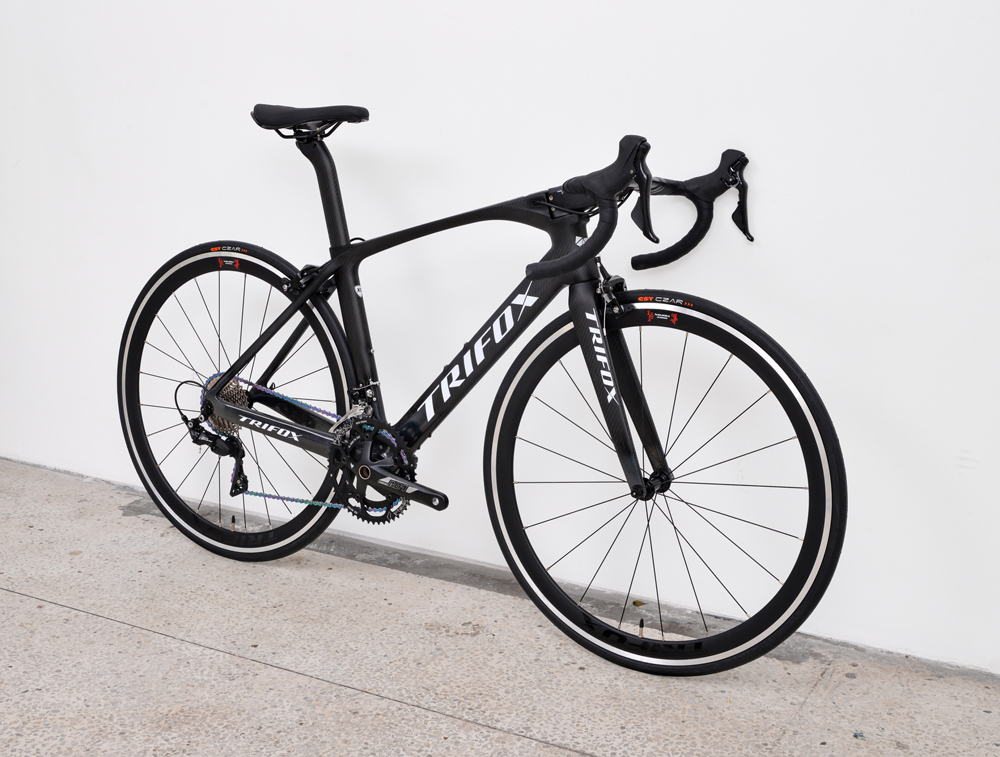
Selecting the right aero road frame can make a significant difference in your cycling performance, especially when it comes to speed. An aero frame is designed to minimize air resistance, allowing you to cut through the wind more efficiently. Here’s how to choose the best aero road frame to maximize your speed. 1. Understand the Benefits of Aero Frames Aero frames are engineered to reduce drag, the force that slows you down as you move through the air. These frames feature streamlined tube shapes and integrated components that help you maintain higher speeds with less effort. The Trifox X12 Carbon Road Bike Frame is an excellent example, designed with aerodynamics in mind to enhance performance. 2. Look for High-Quality Materials The material of the frame plays a crucial role in its performance. Carbon fiber is the go-to material for high-end aero frames due to its lightweight and stiff properties. The Trifox X12, made from premium T800 carbon fiber, provides an optimal balance between weight and stiffness, ensuring that every watt of power you generate is efficiently transferred to the road. 3. Consider Frame Geometry Frame geometry affects how the bike handles and how comfortable it is over long distances. Aero frames often have a more aggressive geometry compared to traditional road frames. This means a lower front end and a more extended reach, putting you in a more aerodynamic position. Ensure that the geometry of the frame you choose matches your riding style and flexibility. 4. Evaluate Integration Features Modern aero frames often come with integrated features such as hidden cables, aerodynamic seat posts, and internal routing systems. These integrations not only improve aerodynamics but also provide a sleeker look. The Trifox X12 excels in this area with its fully internal cable routing and integrated design, minimizing turbulence and enhancing speed. 5. Check Compatibility Ensure that the aero frame you choose is compatible with your existing components or the new ones you plan to install. The Trifox X12, for instance, is designed to work seamlessly with V-brake systems and other standard components, making it a versatile choice for many cyclists. 6. Test Ride If Possible If you have the opportunity, test ride a few different aero frames before making your decision. This hands-on experience can give you valuable insights into how each frame feels and performs under real-world conditions. 7. Seek Expert Advice Consult with experienced cyclists or professionals at your local bike shop. They can offer recommendations based on your specific needs and preferences, helping you make an informed decision. By considering these factors, you can choose an aero road frame that maximizes your speed and enhances your overall cycling experience. The Trifox X12 Carbon Road Bike Frame is a top contender, offering advanced aerodynamics, high-quality materials, and seamless integration to help you achieve peak performance.
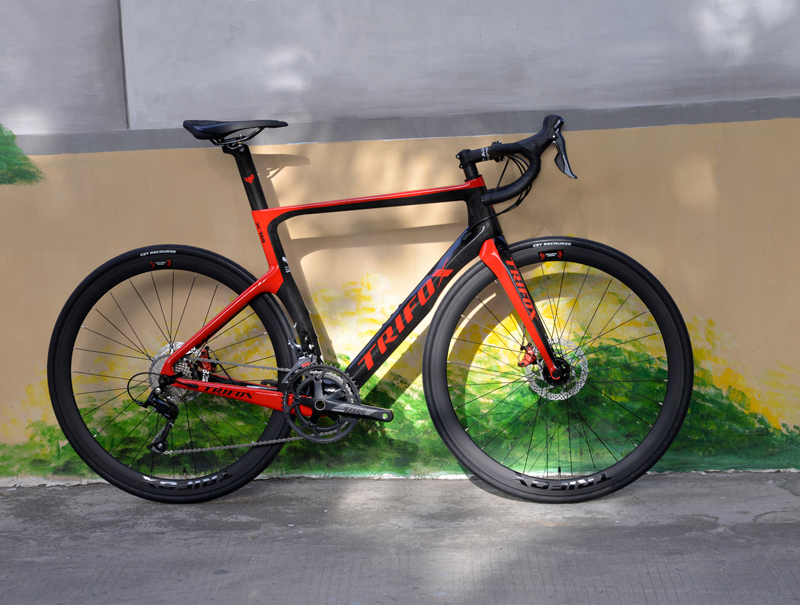
Optimizing the routing design for your bike frame can significantly enhance both the performance and aesthetics of your ride. A streamlined routing system not only reduces wind resistance but also offers a cleaner, more efficient look. Here are some essential tips to achieve an optimized routing design for your bike frame. 1. Choose the Right Frame The foundation of any well-optimized routing design starts with selecting the right frame. Frames like the Trifox X10 Carbon Road Bike Frame are built with internal cable routing features. This frame utilizes high-quality T800 carbon fiber, offering strength and durability while maintaining a low weight. Its seamless internal cable routing reduces wind resistance and enhances speed and efficiency on the road. 2. Plan Your Cable Paths Before you begin, map out the path each cable will take through your frame. This is particularly important for bikes with complex setups involving both DI2 and mechanical systems. Proper planning ensures that your cables won’t interfere with each other and that they follow the most direct, least obstructive route. 3. Use Quality Components Invest in high-quality cables and housing. Cheap components can lead to friction, reducing your bike’s performance and making shifting more sluggish. High-quality cables reduce drag and make your bike's operation smoother. 4. Maintain Cleanliness Ensure that all entry and exit points for your cables are clean and free of debris. Dirt or grime can increase friction and wear down your cables more quickly. Regularly check these areas, especially after rides in wet or muddy conditions. 5. Secure Cables Properly Use appropriate clamps or guides to secure the cables inside the frame. This prevents them from rattling around and potentially causing damage. The Trifox X10 frame, for instance, has a well-organized wiring system that runs through the upper tube of the frame head, simplifying the overall appearance while enhancing functionality. 6. Regular Maintenance Even the best routing design needs regular maintenance. Check the cables periodically for signs of wear and replace them as needed. Keeping your cables in top condition ensures that your bike performs at its best. 7. Consider Professional Help If you're not confident in your ability to optimize the routing design yourself, consider seeking professional assistance. A qualified bike mechanic can ensure that your cables are routed perfectly, maximizing your bike's performance and longevity. By following these steps, you can optimize the routing design for your bike frame, ensuring a smoother, faster, and more aesthetically pleasing ride. For a frame that facilitates this process, consider the Trifox X10 Carbon Road Bike Frame, which combines advanced materials and innovative routing features for top-tier performance.
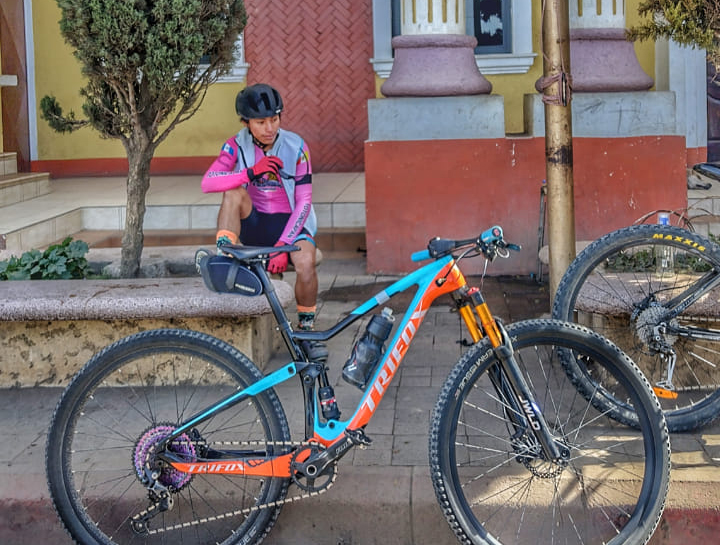
Choosing the right mountain bike frame is crucial for optimizing your riding experience. A top-tier mountain bike frame can significantly enhance performance, comfort, and durability on the trails. Here’s a guide on what features define a high-quality mountain bike frame and how to choose one, using the Trifox MFM100 Full Suspension Carbon MTB Frame as an example. 1. Material The material of the frame impacts weight, strength, and ride quality. High-end frames are typically made from carbon fiber, known for its excellent strength-to-weight ratio. The Trifox MFM100 uses premium carbon fiber, making it both lightweight and incredibly durable. This allows for better maneuverability and less fatigue on long rides. 2. Suspension Design A good suspension system is essential for absorbing shocks and providing a smoother ride. The MFM100 features a full suspension design that ensures optimal shock absorption on rough terrains. This enhances traction and control, allowing you to tackle challenging trails with confidence. 3. Geometry Frame geometry affects how the bike handles and feels. Look for a frame with a balanced geometry that offers stability on descents and agility on climbs. The Trifox MFM100 is designed with modern trail geometry, providing a perfect blend of comfort and performance, making it suitable for various riding styles. 4. Compatibility and Customization A top-tier frame should be compatible with a wide range of components and allow for customization. Ensure the frame fits your preferred wheel size, fork travel, and drivetrain options. The MFM100 is designed to accommodate diverse setups, giving you the flexibility to customize your bike according to your needs. 5. Durability and Build Quality Investing in a well-built frame ensures longevity and reliability. The Trifox MFM100 undergoes rigorous testing to meet high standards of durability and build quality. This means you can trust it to perform under demanding conditions and enjoy years of reliable service. 6. Weight While strength and durability are vital, a lighter frame can enhance performance by making the bike easier to handle and reducing rider fatigue. The MFM100 strikes an excellent balance between weight and durability, offering a lightweight frame without compromising on strength. How to Choose the Right Frame Assess Your Riding Style: Determine the type of riding you do most often (e.g., cross-country, trail, enduro) and choose a frame that suits that style. Fit and Comfort: Ensure the frame size is appropriate for your height and body type. A well-fitting frame improves comfort and control. Budget: While top-tier frames come with a higher price tag, they offer better performance and longevity. Consider investing in quality now to save on potential future upgrades or repairs. In conclusion, features like material quality, suspension design, geometry, and compatibility define a top-tier mountain bike frame. The Trifox MFM100 Full Suspension Carbon MTB Frame exemplifies these characteristics, making it an excellent choice for serious mountain bikers looking to elevate their ride. Choose wisely, and you'll enjoy a superior riding experience for years to come.

















